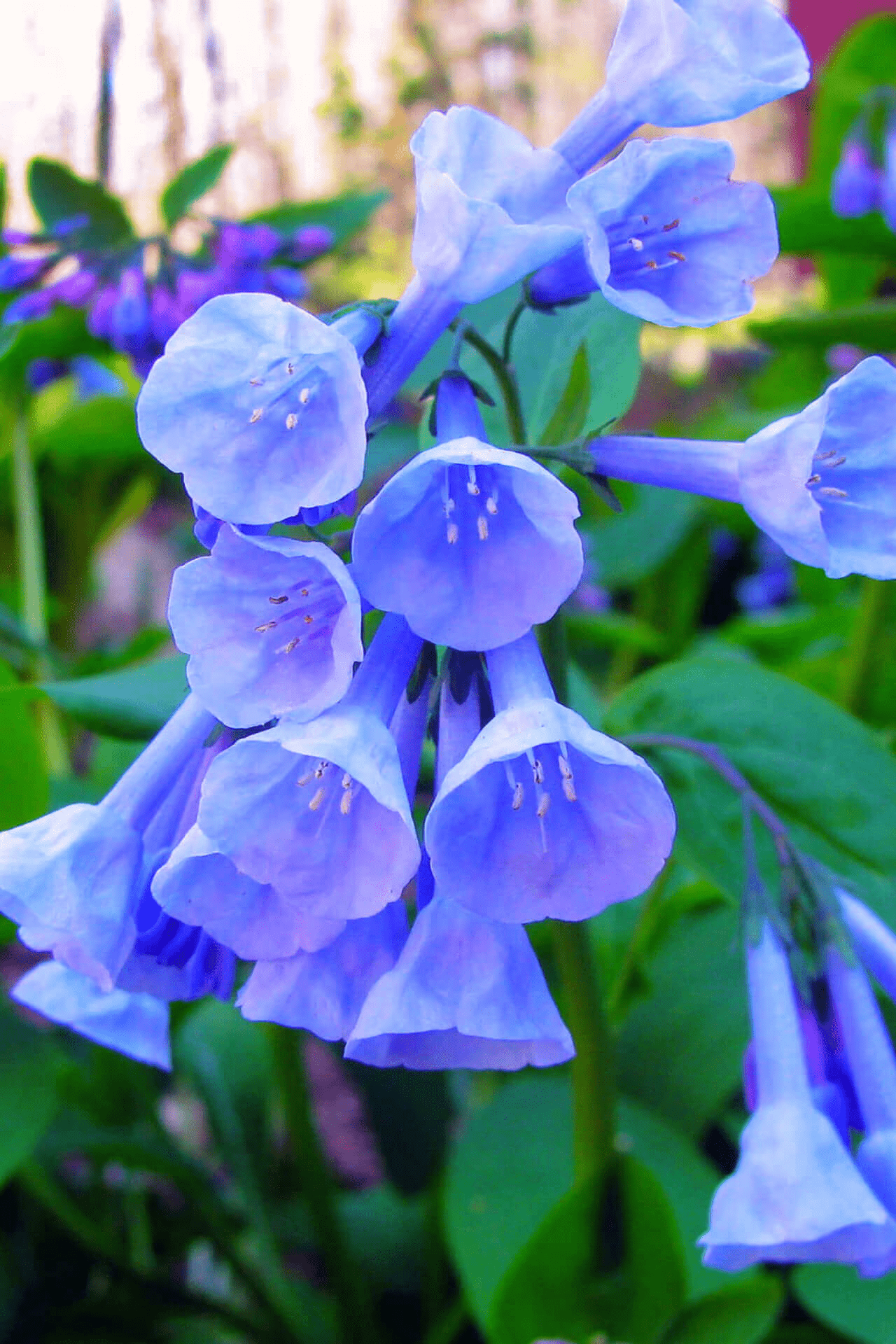
perennial plants for sales
Beautiful, bell-shaped spring blooms
Prefers partial shade, easy to grow
Adds vibrant blue color to gardens
Thrives in
ZONE 3ZONE 4ZONE 5ZONE 6ZONE 7ZONE 8Planting Season:
Year-RoundWhen you add one plant to cart, it automatically adds the second one free on Bogo deals.
Virginia Bluebells have unique bell-shaped flowers that bloom in the spring and summer. The foliage is deep green, and the flowers are deep blue. This low-maintenance perennial is easy to care for and brings beauty to any garden.
They are sky-blue, bell-shaped flowers that can grow up to 24 inches long. As an early spring riser, they'll brighten your yard with deep purple foliage. It won't be long before the foliage turns green and allows the blue flowers to take over the show.
The floral buds are initially pink but will change colors once this flower opens. Although they're known for having a sky-blue color, they'll occasionally surprise you by becoming pink or white instead. Either way, they'll have five shallow lobes, a central pistil, and five stamens.
One of their more unique features is that they mostly grow downward. This suits them, though, as each flower has a long, slender base before opening its five petals. The middle of these flowers will mostly have a white pistil, although it may occasionally be more yellowish.
As previously mentioned, their leaves will initially be purple but then turn gray-green. The alternate leaves can reach a size of up to eight inches, although the majority of them won't pass five inches. Interestingly, they have sessile leaves toward the top of the flower but petiolate leaves toward the bottom. They'll also have smooth margins.
By early summer, these flowers will have already revealed themselves and started to go dormant. However, if fertilized, they'll produce small, wrinkled nuts. Inside these nuts are four individual seeds, which help to propagate the species further.
They Attract Pollinator's
Virginia Bluebell flowers have a more deeply set pistil. Fortunately, this makes them an ideal food source for hummingbirds. Additionally, you may see butterflies, skippers, moths, bumblebees, bee flies, and flower flies. Between their sky-blue coloring and all the exciting wildlife they can bring into your yard, they are a big hit with most gardeners. Be aware that they may appear to die permanently the first time they go dormant. Don't worry because these perennials will come back to brighten your yard and delight the local wildlife year after year.
Bloom Season
Spring
Bloom/Foliage Color
Blue
Height at Maturity
Over 12"
Care
Virginia Bluebell (Mertensia virginica) thrives in well-drained, moist soil. Water regularly to keep the dirt consistently moist. After blooming, cut back the plant to ground level. It benefits from occasional fertilization and can self-seed if conditions are favorable.
Plant Reproduction
Virginia Bluebell spreads by self-seeding and by sending out underground stems called rhizomes.
Shipping date depends on the date displayed and chosen when you order from the product's page.
We only accept returns on plants verified dead. If you think your plants have died, we offer a 1 year warranty, please use use this File a Claim Link to verify dead plants and start with return warranty process.




Stunning Color Transition:
Virginia Bluebells start as pink buds and gracefully turn into soothing sky-blue flowers, offering a captivating display.
Springtime Delight:
Blooming early in spring, these perennials provide a refreshing burst of color after the winter season.
Adaptable and Easy-Care:
Thrives in shade or partial sun with minimal maintenance, perfect for a variety of garden settings.
Naturalizing Beauty:
Ideal for woodland gardens, these plants spread gently, creating a lovely, naturalized look with their graceful blooms.
Caring Tips
Each box contains detailed care instructions and information about your product. But here's the basics.
Care Tips
Virginia Bluebell (Mertensia virginica) thrives in well-drained, moist soil. Water regularly to keep the dirt consistently moist. After blooming, cut back the plant to ground level. It benefits from occasional fertilization and can self-seed if conditions are favorable.
Light Requirements
Virginia Bluebell thrives in partial to full shade, preferring dappled sunlight through woodland canopies. It does well in moist, well-drained soil and is an excellent choice for shaded garden areas where it can receive indirect or filtered light.
Hardy Planting Zones
3 • 4 • 5 • 6 • 7 • 8
How often should I water my plants?
How do I know if my plant is getting too much or too little sunlight?
What should I do to prepare my plants for winter?
What are the signs that my plant needs fertilizing?
How can I prevent pests from damaging my plants?
How do I choose the right plant for my climate zone?